Divinity: Dragon Commander – Review
by Chris
|
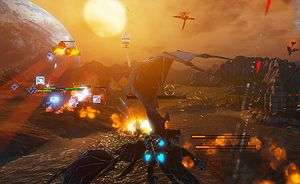 Being able to sort games into genres allows us, as gamers, to organise and define the best of individual game types. For example, Half Life 2 is one of the best first person shooters, Company of Heroes is one of the best real time strategies and so on. You could never say that Fifa 13 was a better game than Amnesia: The Dark Descent, because one features men kicking a leather ball around some big grass fields whereas the other involves running around in the dark and, if you’re me, trying not to shit yourself. So it is impossible to compare them, because what makes them appealing their own right is very different.
Being able to sort games into genres allows us, as gamers, to organise and define the best of individual game types. For example, Half Life 2 is one of the best first person shooters, Company of Heroes is one of the best real time strategies and so on. You could never say that Fifa 13 was a better game than Amnesia: The Dark Descent, because one features men kicking a leather ball around some big grass fields whereas the other involves running around in the dark and, if you’re me, trying not to shit yourself. So it is impossible to compare them, because what makes them appealing their own right is very different.
Enter Divinity: Dragon Commander. A turn-based, card-playing, third-person (well, dragon), real-time-strategy title, which takes generic genre ideals and tells them to fuck clean off, because it wants to try to give you a giant cake of gaming goodness and let you eat the whole lot, you greedy bastard.
All credit to developers, Larian Studios, for the latest instalment in the Divinity series, because they’ve given this a seriously good go, and despite no prior experience with the series, I felt quite invested right from the off. A sequence of still, almost cave-drawing-esque depictions, complete with voiceover and musical backing laid the story out before me; a world in trouble, a throne threatened, a horny king having sex with a dragon lady.
Yes, I was a little thrown there too. Essentially when the king – my dad – had sex with a dragon masquerading as a lady. I do wonder at what point that became apparent to him, perhaps when he lifted up her skirt and everything was a little more scaly than he had become accustomed to in other maidens of the realm. Not one to turn his nose up at the opportunity for some freaky dragon ass, he had his way with her and, sure enough, a half-man-half-dragon bastard child was born. That’s you, the player, and with the old man now dead, and his fully-human children fighting over the throne, it’s time for you to unite all the races and claim what is yours.
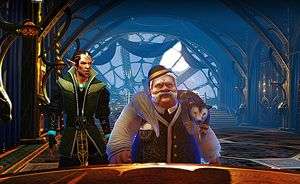 From aboard The Raven, the ship from which you wage your campaign of war, you will be able to order units around the world, spend research points on both your dragon and your units, as well as discuss diplomatic matters with your generals and the delegates from each of the five races. Larian Studios have rightly identified that you’re going to be spending much of your time aboard The Raven, and it is the only place where your character interacts directly with other people. It feels like a living, breathing place, full of people who are committed to your efforts, but equally have their own agenda.
From aboard The Raven, the ship from which you wage your campaign of war, you will be able to order units around the world, spend research points on both your dragon and your units, as well as discuss diplomatic matters with your generals and the delegates from each of the five races. Larian Studios have rightly identified that you’re going to be spending much of your time aboard The Raven, and it is the only place where your character interacts directly with other people. It feels like a living, breathing place, full of people who are committed to your efforts, but equally have their own agenda.
You’ll visit various areas aboard The Raven, to conduct your affairs as the would-be ruler. The first of these is the Bridge, where you access the strategic map to direct your units, play cards to affect battles and invade rival countries. All the combat, be it either card, turn based or real time, is done via the Bridge and it therefore becomes your most-visited destination.
The next is the Throne Room, where you deal with each of the delegates from the various races. Each race – the Elves, Imps, Dwarves, Lizardmen and Undead – all have their own political, social, economic and religious stances, to name but a few. These five have opinions on everything and it’s your job to keep them as happy as possible. Of course, keeping one or two happy usually means pissing off the other three, and that will have greater implications as your war effort goes on.
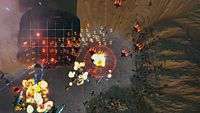 |
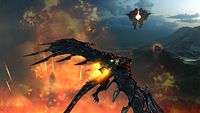 |
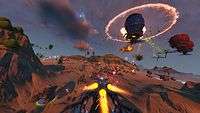 |
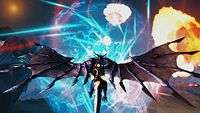 |
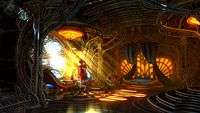 |
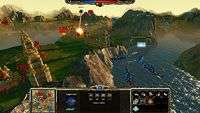 |
Kudos to Larian Studios for being brave with the types of choices you have to make. I’m not sure if they are random or carefully scripted based on your position in the story, but they ask some very tough questions that mirror real life and current affairs. Same sex marriages, the legalisation of drugs, mandatory conscription, creation of a national health services – these are all questions being posed by governments the world over in reality, and it is down to you to decide what is best for the realm. Agreeing with one race, means disagreeing with another, and this will provide you positive and negative bonuses dependent on the race. Siding with the Dwarves, for example, will net you more gold, but siding with the Undead may grant you more luck. You also have to consider these decisions when waging your wars as these delegates aren’t just here to grant you bonuses; public opinion among the five races will change, and with it, the amount of support you get in the lands you fight in. Will you corrupt your own morals, in order to wage a more successful campaign, or stick to your guns and get caught in a war of attrition?
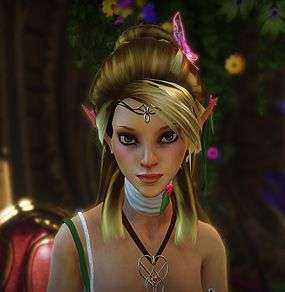 After the Throne Room is the Queens Chambers, an area which is reserved for the woman you’ll find yourself paired with fairly early on. Without giving too much away, have a choice of who you’ll marry which, in itself, carries a fair amount of importance as a unity with one nation may bring certain benefits but could have serious implications with another and tip the scales dramatically. Naturally, I just went for the hottest looking one – it really wasn’t a hard choice – and went from there.
After the Throne Room is the Queens Chambers, an area which is reserved for the woman you’ll find yourself paired with fairly early on. Without giving too much away, have a choice of who you’ll marry which, in itself, carries a fair amount of importance as a unity with one nation may bring certain benefits but could have serious implications with another and tip the scales dramatically. Naturally, I just went for the hottest looking one – it really wasn’t a hard choice – and went from there.
Next is the Bar, which is where you can find your generals hanging out. Each of these carries different traits which can be used to auto-resolve conflicts that arise on the battlefield, should you not want to manually crush the computer on every occasion. They also have to be ordered around at times, outside of the war zone, and how you handle their various situations will reflect on your overall stance as Emperor.
Following the Bar, is the Engineering Bay, which is where Grumio the Imp can be found. He acts as your scientist, of sorts, although he generally seems more interested in blowing crap up, than actually researching anything. Strange personality quirks aside, here you can research new units to buy on the battlefield or buy upgrades for existing ones. These are purchased through research points, which are earned through various means, including seizing land, building academies, and political decisions.
Finally, our tour of The Raven ends in the The Royal Chamber, which is where Maxos resides. He is essentially your right hand man, and former best friend of your father. He serves to fill you in on the general lore and history and also deals with upgrades to your dragon character. Did I mention you can transform into a dragon? Yes you can. Yes it is awesome. And yes, I considered adding an extra point to the score just for that, journalistic integrity be damned. Upgrading your dragon is a pretty enjoyable affair, although it uses the same research points that you spend on your army. So the challenge becomes either balancing the spending of points, or going all out on one side. While it may seem like common sense to go for the dragon, as the opposition doesn’t have one, it can’t win a war by itself, and a poorly formed army will be wiped off the map just as easily.
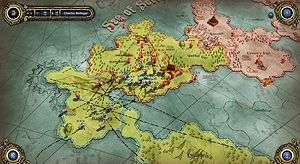 When you’ve finished sauntering around your ship like some dragon prince (yes, bad example), you might want to consider the whole war thing? An absolute shitstorm is mustering and its down to you to clear everything up, which is achieved in three steps. The first is the turn-based element of the game, in which you create buildings, buy units, move them around and engage other people in battle. This is the first area where Dragon Commander starts to slip because although there is a tutorial of sorts, it’s pretty thin on the ground.
When you’ve finished sauntering around your ship like some dragon prince (yes, bad example), you might want to consider the whole war thing? An absolute shitstorm is mustering and its down to you to clear everything up, which is achieved in three steps. The first is the turn-based element of the game, in which you create buildings, buy units, move them around and engage other people in battle. This is the first area where Dragon Commander starts to slip because although there is a tutorial of sorts, it’s pretty thin on the ground.
The game does give you some basic directions on where you should be heading and how the basic concept works, but my first turn was largely spent trying to understand what I was moving, where I was moving them to and what implications this would have. It isn’t the worse form of a tutorial, to allow the player to find out for themselves, but it assumes you understand the consequences for your blundering, and isn’t that forgiving. By the second turn, the AI – set to ‘medium’ difficulty – invaded the only land I had, and set about dismantling me. The same lack of tutorial blighted sections of the real-time-strategy element, explaining basic things such as the camera, and selecting units, but failing to advise how to capture buildings, or explaining the capabilities of individual units. Sure, these became apparent before long but they should really have been explained from the off.
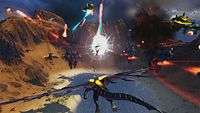 |
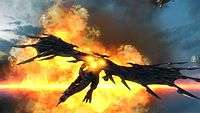 |
 |
 |
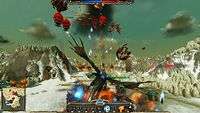 |
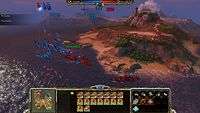 |
Lack of tutorial aside, the turn-based element of the game, is your starting point each turn. Moving your units around is relatively straightforward, although I’ve noticed what I can only assume is a bug, where you move them into position, ‘finish’ the turn and they end up somewhere else. This becomes quite frustrating, although it could be because I can’t invade a country if its surrounding waters are full of ships. I don’t know if that is true, because, again, it wasn’t covered within any tutorial.
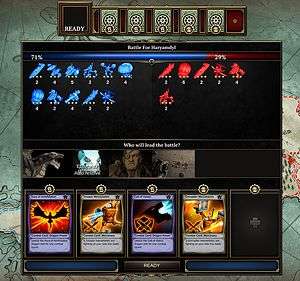 Units can be moved into neighbouring countries to start a war and can also be left in occupied territory to act as a defensive force. From the areas you capture, you can also construct buildings, which provide certain bonuses. Some will provide you new cards to use every three turns, some allow you to construct units, and some provide extra gold and research points. Having a general balance is wise, but choosing where you place things is key.
Units can be moved into neighbouring countries to start a war and can also be left in occupied territory to act as a defensive force. From the areas you capture, you can also construct buildings, which provide certain bonuses. Some will provide you new cards to use every three turns, some allow you to construct units, and some provide extra gold and research points. Having a general balance is wise, but choosing where you place things is key.
When you’ve made your choices about where units will end up, the turn ends and the enemy makes their move which, when concluded, may find you engaging the enemy. At this stage the card element comes into play, and although you can play some cards during the first phase (to double resources for a country or kill its entire population for example), you’ll use the majority of the cards here.
The cards come in various forms, influencing certain tactical aspects from extra units in fights to single-round boosts for your dragon, to perk increases or decreases for individual units. The enemy may attack you with a group of hunters, which will likely form the spearhead of their onslaught in the real-time element of the game. This would normally be a problem, except you have the option to play a card which reduces their speed by fifty percent, buying you more time to mount a proper defence. Cards are dished out based on storyline decisions, political choices, and what buildings you create. Although the cards may appear to be an afterthought, given the scope and the nature of the game, they easily prove to be the ace up your sleeve.. and yes, that pun was fully intended. The computer engages you and outnumbers you? Make it as difficult to achieve victory as possible. Going to war and the computer spawns an extra group of Warlocks? Reduce their hit points by fifty percent. The fact that these can be used in the online multiplayer only highlights the importance of understanding their impact in the single player.
With the card portion complete, and providing you don’t want to auto resolve the battle with a general, this is where the real-time strategy area comes into effect. The maps are varied enough, if not a little standard in their layout and you’ll frequently end up with two bases – yours and the opposition, at either ends of the map. In the middle will either be a stretch of land with an extra base dotted around it, or a body of water around the edges with a neutral naval base to procure. The AI appears to have only two strategies, which are either to rush at you with everything it has, unless you outnumber it, and if you manage to repel the first attack, it will take to either trying to capture the neutral base or turtling away at its only home. It can make a the battles a little predictable but they are still fun, and the variety of units certainly does a great job of keeping things interesting. The units are nothing special, and you’re going to have seen them before in one form or another, but the variety is good.
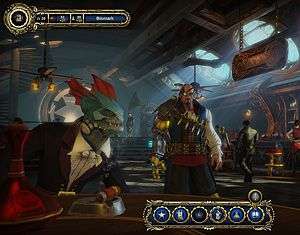 In the heat of battle, things can get quite complicated and convoluted. Almost all units have a secondary, or even tertiary, mode that ranges from shielding other units to self destructing. The problem is getting a hold of the unit you want for the selection. In any given fight they all tend to blend into one and before you can make any real contribution they’ve been destroyed. It’s a real shame, because you’ve been building towards this moment and it just seems a little awkward and rushed, almost comparable to losing your virginity in a sleepy fumble after spending months of wooing and mental preparation. It’s all over very quickly, you don’t really feel satisfied and you can’t really ask the other party how it was for them because they’re an artificial intelligence. Or something.
In the heat of battle, things can get quite complicated and convoluted. Almost all units have a secondary, or even tertiary, mode that ranges from shielding other units to self destructing. The problem is getting a hold of the unit you want for the selection. In any given fight they all tend to blend into one and before you can make any real contribution they’ve been destroyed. It’s a real shame, because you’ve been building towards this moment and it just seems a little awkward and rushed, almost comparable to losing your virginity in a sleepy fumble after spending months of wooing and mental preparation. It’s all over very quickly, you don’t really feel satisfied and you can’t really ask the other party how it was for them because they’re an artificial intelligence. Or something.
Thankfully, much like your sex life, it’s possible to spice things up by transforming into a dragon. Allowing for a certain amount of time to pass at the start of the fight before you can invoke the dragon, presumably to avoid immediate spawning and dicking the enemy right from the off, the ability to transform pretty much gives the player the upper hand in most battles when outnumbered. Combine this with the fact that the dragon has a jetpack as well as plenty of moves and attacks to purchase, and it then becomes a pretty decent killing machine. The enemy certainly knows how to defeat him; anti air weapons are not your friend, but combine these efforts with ground troops and things generally go your way most of the time.
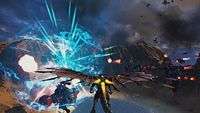 |
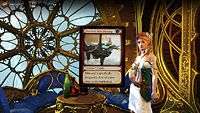 |
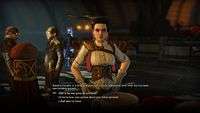 |
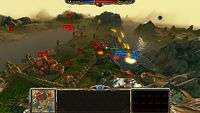 |
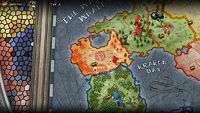 |
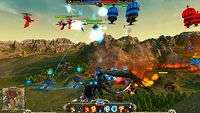 |
That is, provided you have the support. Each country you invade (or defend) has a population and, depending on your popularity with the race that inhabits the land, the outcome will reflect on the war effort. Recruits are required to build units and buildings, but a lack of popularity will slow the rate at which you can recruit, meaning that the war effort becomes bottle-necked at the production line. It doesn’t matter if you’ve got an all-singing, all-dancing dragon; it won’t mean squat if you can’t raise an army to support it. Knowing when to invade certain realms and when to levy support from delegates is key and provides and extra balancing act to the game.
 Graphically, Divinity: Dragon Commander is a mixed bag of tricks. The cinematics provide a pleasant and unique style, while the highlights are definitely the character models and backdrops of The Raven. The individual rooms aboard the ship are also brilliantly presented and give a real sense of a place that is the focal point of a war effort. There are plenty of colours, metal, and well lit areas, giving off a steampunk-meets-rich-aristocrat feel to the environments. The strategic map comes across as a steampunk-pirate themed affair and the cards are well detailed. The ball gets dropped slightly with the real time strategy section, which isn’t bad by any standards, but equally isn’t that amazing; It just looks pretty average. The units and dragon have a decent amount of detail, but nothing jaw dropping and, even on a reasonably high-spec PC, the game slows down to a bit of a chug when there’s plenty going on.
Graphically, Divinity: Dragon Commander is a mixed bag of tricks. The cinematics provide a pleasant and unique style, while the highlights are definitely the character models and backdrops of The Raven. The individual rooms aboard the ship are also brilliantly presented and give a real sense of a place that is the focal point of a war effort. There are plenty of colours, metal, and well lit areas, giving off a steampunk-meets-rich-aristocrat feel to the environments. The strategic map comes across as a steampunk-pirate themed affair and the cards are well detailed. The ball gets dropped slightly with the real time strategy section, which isn’t bad by any standards, but equally isn’t that amazing; It just looks pretty average. The units and dragon have a decent amount of detail, but nothing jaw dropping and, even on a reasonably high-spec PC, the game slows down to a bit of a chug when there’s plenty going on.
What this game lacks in certain areas for graphics, however, it more than makes up for in the sound department. The voice acting for Divinity: Dragon Commander is some of the best I’ve heard in quite a while. Each character sounds like they truly have their own personality and it certainly comes across in the delivery that the actors had fun with the roles, which is always pleasing to hear. The soundtrack doesn’t get irritating or repetitive and suits the mood of the ship, the map, and the battlefield. Overall it’s enjoyable and, in all honesty, helps you overlook the shortcomings in some graphical areas.
In terms of replayability, there’s plenty to keep you busy. Between the campaign, extensive multiplayer and skirmish modes, you’ll have to find plenty of extra hours to sink into the game. The multiplayer supports a four-player mode, meaning that it successfully avoided the standard 1v1 affair that it could have been. If you can get four friends together who own the game, you’ll likely have some very enjoyable evenings with some heated discussions, and there’s always the option of the various difficulty settings to play the campaign again, taking different stances and modifying how you play against the opposition.
Pros- Excellent role playing element
- Genuinely enjoyable planning and strategy phase
- Lovely pre war visuals and sounds
- You get to be a dragon with a jetpack
- Tutorials leave you wanting some actual direction
- The actual game element is a little lacking in places
Divinity: Dragon Commander is a very good game. Greatness eludes this title, however, because of some missing polish around the edges and a lack of finesse when it comes to the real-time-strategy element. It isn’t bad at all; it just looks and feels a little average when you compare it to the planning and role playing element of the game. Larian Studios should be commended for their efforts to take a few genres and pull them together as one. The question will always remain, however, 'is this a jack of all trades, master of none?' and the answer, thankfully, isn’t that straightforward. Buy Divinity: Dragon Commander for the unique appeal, and stay for the fun and challenging role playing and planning element. Just don’t expect the real-time element to reflect Starcraft II or Company of Heroes
Last five articles by Chris


















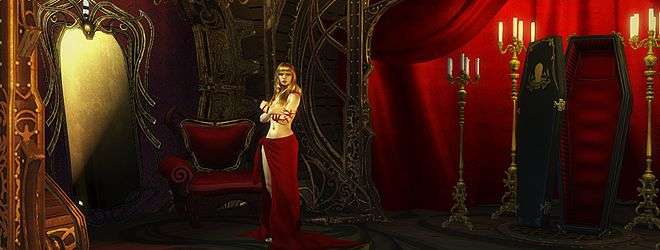
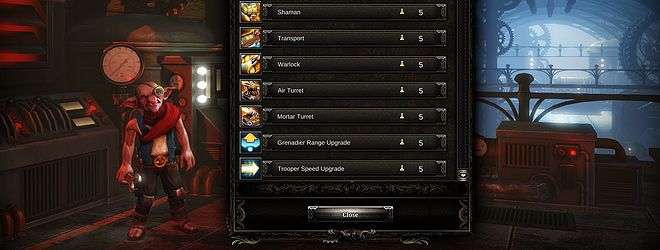
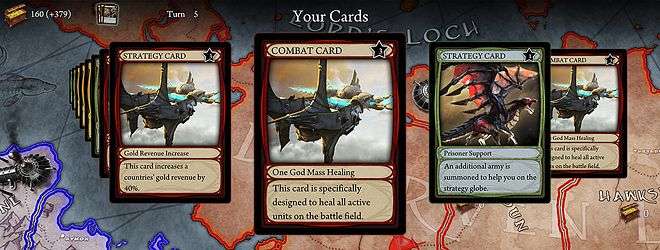
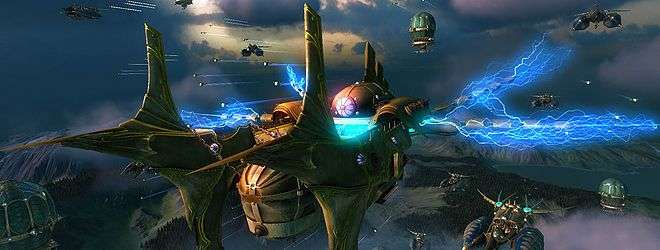






I loved the hell out of this at last year’s E3 and Gamescom. Loved it so much at E3 that I just had to go back and see how it was progressing when Gamescom rolled around, and then of course they ended up getting their demo PCs stolen by some idiots. A stunning game though, and I adore the mix of real-time combat, turn-based strategy, role-playing AND card games all in one single game… that’s awesome.
The graphics never seemed that bad to me, even as a self-confessed graphic whore, but I suppose I just only expect a certain level of detail from specific developers now. I reckon this will be one I’ll end up playing some day, if I can find the time. Also, the folk at Larian were great guys – so damned passionate.
I’d love to meet them some time and really shake their hands. If nothing else, the passion they’ve thrown into attempting something so bold, rather than playing it safe, should be commended. Especially given all the mediocrity we, as a industry, get lumbered with. I’ve really enjoyed it, easily one of the best surprises this year!
This looks interesting, reminds me abit of Shogun 2 but with 100% more Dragons. Not too sure about the card element though. I’d imagine it would be pretty frustrating if when you think you’re about to win your opponent drops some card that heals all his men and then in turn fucks you over.
Bullshit move if you ask me.
The cards are only played before combat, so there are no hidden surprises prior to getting into the real time strategy element